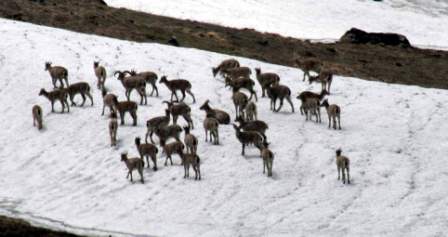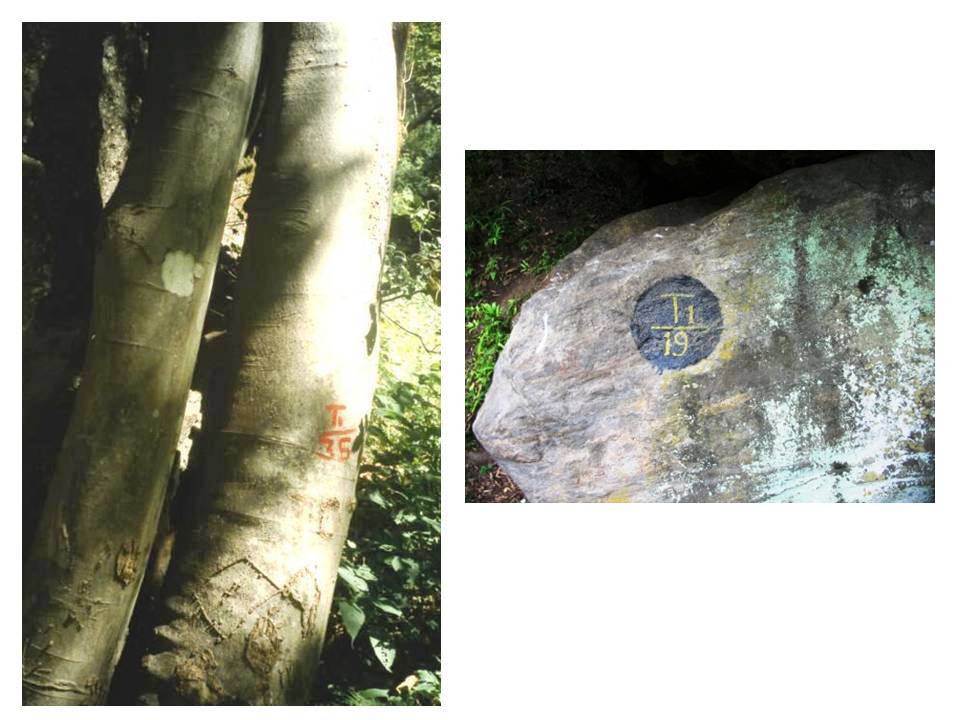Research
Monitoring
At the Great Himalayan National Park, research and monitoring have been recognised as two indispensable arms, which support and strengthen the Protected Area (PA) management. They improve understanding of issues and strategies relevant to PA management and interactions between the PA and people. Monitoring has been considered as an essential component of any viable strategy to conserve biological diversity because it provides a basis to track the status of various components of biodiversity over time. Research and monitoring outputs enhance the information base; assist in redefining PA objectives, prioritizing management issues and evolving appropriate strategies.
Monitoring Large Mammals


This is the oldest activity in GHNP. The Park has been organising annual animal census for large ungulates as an outcome of the Conservation of Biodiversity Project at GHNP in 1994-1999. Here, different methods such as line transect sampling and silent drive counting were employed by a multidisciplinary team of scientists from the Wildlife Institute of India and the Park management. This exercise was part of collection of base line data for a Long Time Ecological Monitoring (LTEM)
Long Term Ecological Monitoring

The Long Term Ecological Monitoring (LTEM) strategy prepared with the Wildlife Institute of India is very important aspect of Park biodiversity conservation. LTEM provides a basis to track fluctuations in population numbers and status of certain species and, thereby, evaluate the utility of the regimes adopted for conserving biodiversity. PA managers while appreciating the dynamic nature of ecosystems are expected to know: “How healthy are the ecosystems that the Park is charged with protecting?”
The ban on collection of Non Timber Forest Produce (NTFPs), livestock grazing and human impacts has greatly improved the general ecology of the area. Various studies and monitoring data collected has proved that abundance of many rare and Threatened species like Western Tragopan, Himalayan Monal and Himalayan Musk Deer is increasing significantly.


LTEM has identified 57 taxa have been selected for monitoring in 35 sites in three sub-watersheds viz., Tirthan, Sainj and Jiwa have been included for monitoring various taxa. Thirty-three plant species (10 trees, 10 shrubs and 13 herbs) are identified for monitoring on the basis of their economic importance, conservation significance and threats to survival of particular species. Out of the five reported species of pheasants, three pheasants – Himalayan Monal (Lophophorus impejanus), Western Tragopan (Tragopan melanocephalus) and Koklass (Pucrasia macrolopha) – have been selected for monitoring the pheasants based on their encounter rates, and call counts. Thirty-one mammalian species are included in the monitoring programme. Their monitoring is being done by direct and indirect sightings, encounter rate, scanning, silent drive count, and line transect sampling. Methods for monitoring annelids and insects are also being devised.
Monitoring Issues
It was assumed that the community members and frontline staff of GHNP would find LTEM methods easy to follow. The local villagers/forest guards usually know the local names of plants and animals. However, practical experience showed that LTEM data needs to be done by researchers or scientists. The baseline data collected by the researchers and scientists of the Wildlife Institute of India in 1999-2000 at about 500 plots is again being revisited after 10 years to see the changes that have taken place.
The following Tables report results of surveys of the density of certain important species within GHNP. The data is based on the field reports of the Park staff round the year.
Population abundance of various species in GHNP.
Year 2009:
| Sr. No. | Name of Species | Approximated habitat area in GHNP(sq km) | Number per sq km |
|---|---|---|---|
| 1 | Monal | 200 | 10.45 |
| 2 | Koklash | 150 | 3.77 |
| 3 | Western Tragopan | 120 | 1.9 |
| 4 | Cheer Pheasant | 40 | 5.83 |
| 5 | Ghoral | 250 | 3.46 |
| 6 | Serow | 50 | 0.15 |
| 7 | Himalayan Tahr | 150 | 3.62 |
| 8 | Blue sheep | 90 | 2.77 |
| 9 | Musk deer | 50 | 0.61 |
| 10 | Snow cock | 50 | 2 |
| 11 | Leopard | 200 | 0.5 |
| 12 | Black bear | 180 | 0.25 |
| 13 | Brown bear | 100 | 0.625 |

